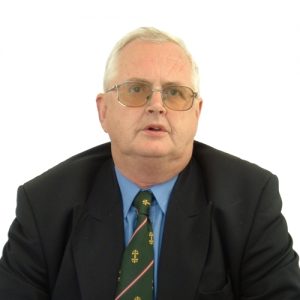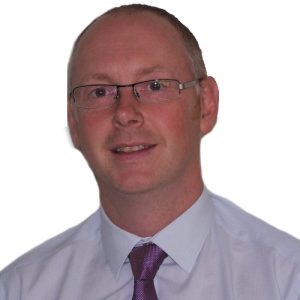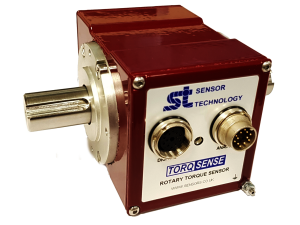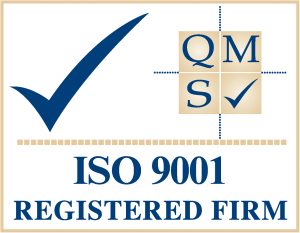Nowadays fortieth birthdays are for looking forward rather than back. Serial innovators Sensor Technology Ltd has reached that milestone and father and son team Tony and Mark Ingham say there is no sign of their technological advancement slowing down.
 Tony Ingham: Sensor Technology Ltd was founded in 1976, in a partly-restored water mill, miles from the nearest A-road so that we had a quiet environment in which to develop new torque measuring techniques. At that time options for measuring rotary power were pretty basic and needed to improve if machine control was to advance.
Tony Ingham: Sensor Technology Ltd was founded in 1976, in a partly-restored water mill, miles from the nearest A-road so that we had a quiet environment in which to develop new torque measuring techniques. At that time options for measuring rotary power were pretty basic and needed to improve if machine control was to advance.
In fact 1976 could be seen as critical for much of today’s industrial technology. AC motors were replacing DC, inverters began to appear, servomotors and programmable logic controllers became accepted. Electronics was offering a whole new frontier and there was even talk that microchips would lead to powerful computers no bigger than filing cabinets!
That year saw the first commercial flight of Concorde, the opening of the Selby Coalfield superpit and England’s largest reservoir, Rutland Water. Transport was advancing with the ultramodern Intercity 125 train, ground breaking Ford Fiesta and futuristic Rover SD1.
Meanwhile, popular memory reminds us of the summer’s heatwave and drought, sporting triumph for James Hunt and John Curry and how the Sex Pistols and the Damned took over the music charts for the Brotherhood of Man and the Wurzels.
Mark Ingham: I liked the Wurzels, loved a new TV show call the Muppets and was looking forward to starting school. My grasp of science and technology was rudimentary, but between watching the watermill and pedalling my bike (balance wheels long-gone) I was unknowingly gaining some ideas about torque.
Moore’s Law, that computer power would double every two years, was in full swing. But if we look for an equivalent for data, we can say that Sensor Technology has contributed to the super-exponential growth of digital data of recent times – and that this is a very good thing. The ‘information age’ has matured to give us the Industrial Internet of Things (IIoT), Industry 4.0 (I4.0) and Machine-to-Machine Communications (M2MC) – all ways of collecting large amounts of data from manufacturing machinery so that their performance can be optimised.
Almost without exception this data is generated by sensors dotted around the machinery and feeding back to a central computer. Thus it is fair to say that sensors are the building blocks of modern machine control and automation.
Tony: Of course there are many different types of sensors each measuring different parameters. But because they can all be converted into digital signals, they can be combined and processed together to build up an accurate picture of how a machine is functioning.
With a torque sensor the digital signal is actually a measurement of the twisting of the shaft under rotary load. Traditionally the shafts rotation meant torque sensors had to use slip rings, inductive couplings or rotary transformers to collect and transmit the signal. But these introduced problems of electrical noise, long term reliability, speed range and accuracy.
Sensor Technology sidestepped these issues by using surface acoustic wave (SAW) devices in a non-contacting manner. The SAWs are tiny ceramic pads containing frequency resonating combs which are glued onto the drive shaft. As the torque changes the combs expand or contract proportionally. An adjacent RF (radio frequency) couple emits waves towards the SAW, which reflects them back with frequency altered in relation to the degree of deformation of the comb. Thus there is no need for physical contact between the torque sensor and the shaft.
We developed this technology some time ago and this year introduced our third generation of SAW-based sensors, which are smaller, more powerful and more accurate than previous models. They are suitable for applications of up to 13,000Nm and are robust for use in demanding environments.
Mark: We have also recently upgraded our optical torque sensing technologies, which are typically used in smaller applications. Optical sensors use a pair of gratings attached to a shaft. When the shaft twist slightly under torque the alignment of the gratings change and thus the light transmitted through to a detector varies in relation to the torque.
Our new ORT 230/240 series resets the benchmark for optical torque transducers, providing precise, dynamic measurement of rotary and static torque for applications between 10 mNm and 100Nm and for bandwidths of up to 50kHz.
All our torque sensors are compatible with our electronic readout solutions, which provide instant visual analysis of real-time torque data and also store the information for traceability and historical records.
Tony: One of the great things about developing technologies is the way they transfer into new fields. For instance we have used our wireless signalling technology on non-rotary applications to create a load sensor. While there are plenty of load sensors around already, a wireless one open up new possibilities, in for instance applications where wiring would be difficult or expensive to install or maintain.
One of the most successful uses of this has been with helicopters carry underslung cargos. Pilots need to know the weight of the load, but drilling a hole in the aircraft’s body for a signal wire would invalidate its certificate of airworthiness, so a wireless solution is essential. Further we can integrate the load data with navigational and flight dynamics data to generate comprehensive operational reports.
 Mark: It is inevitable that the technology of sensors is going to continue to develop over the coming years. For instance we will see the rise of ‘intelligent sensors’ which can process raw data into higher level information in real time and use it for instant optimisation of machine performance.
Mark: It is inevitable that the technology of sensors is going to continue to develop over the coming years. For instance we will see the rise of ‘intelligent sensors’ which can process raw data into higher level information in real time and use it for instant optimisation of machine performance.
Clustering intelligent sensors together will lead to sensor LANs (local area networks), which will enable highly distributed control systems architecture with attributes such as robustness, speed, agility and flexibility for change and development.
Other trends we can expect to see in sensor development include cost reduction, miniaturisation and standardisation of communications’ protocols, plug-and-play, embedded capabilities and signal quality enhancements. Sensors may also develop the ability to supply information straight to the Cloud or a remote data archive. Perhaps, above all, sensors will have to become ultra flexible, easy to install and remove, simple to connect into a control network and quickly reconfigure for new duties.





